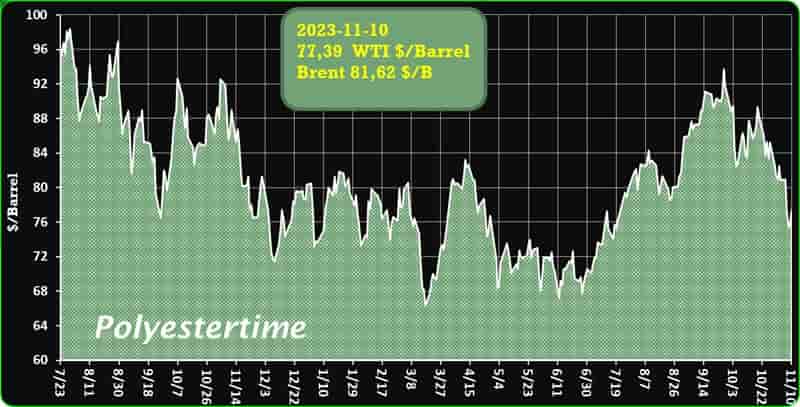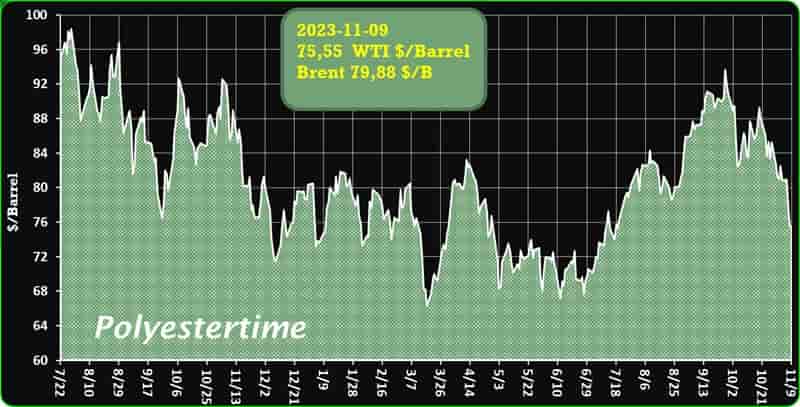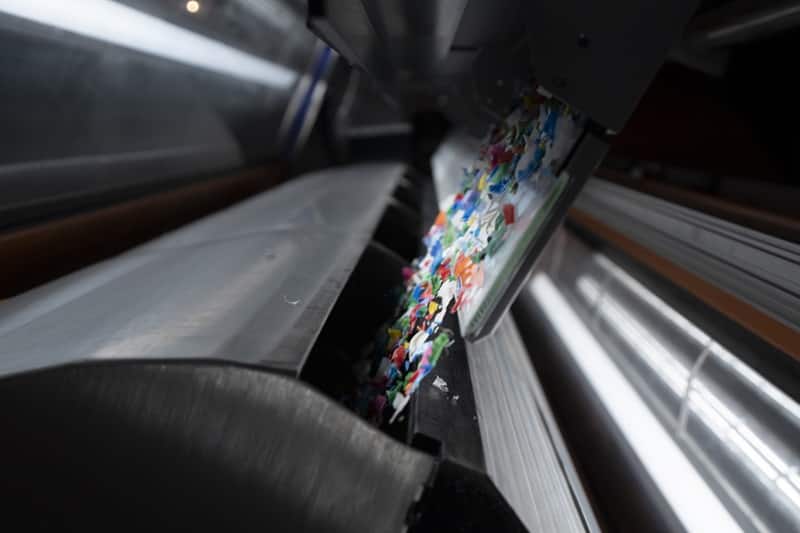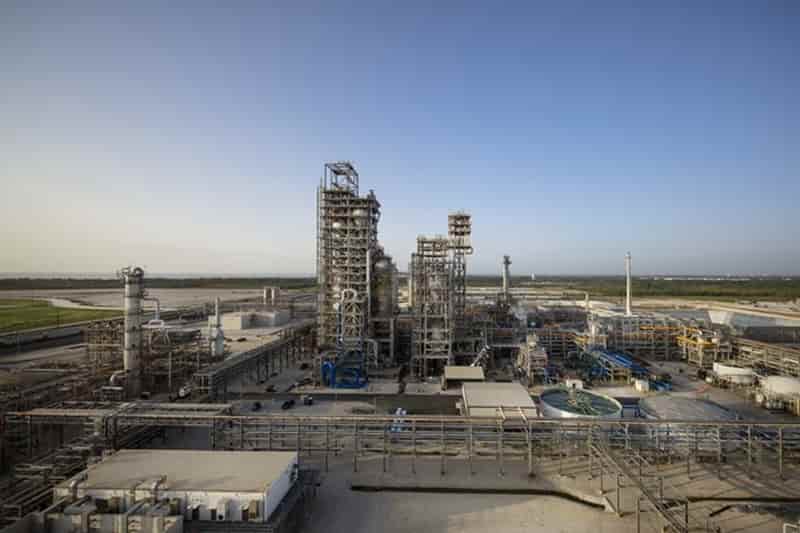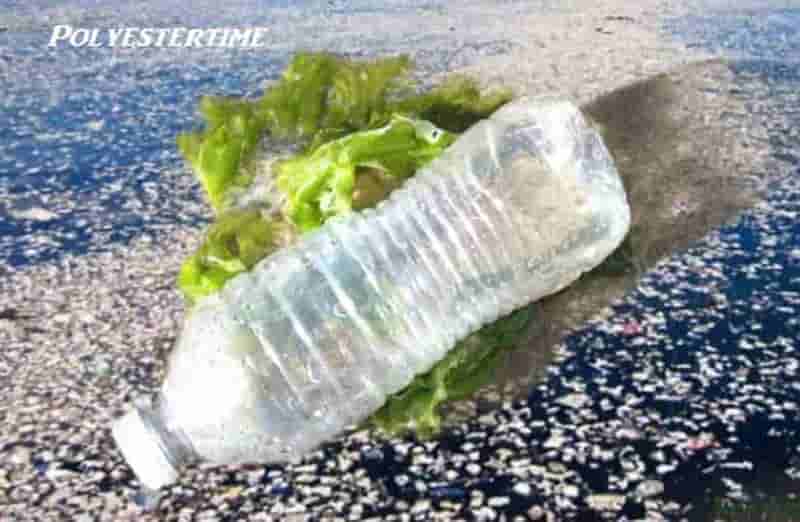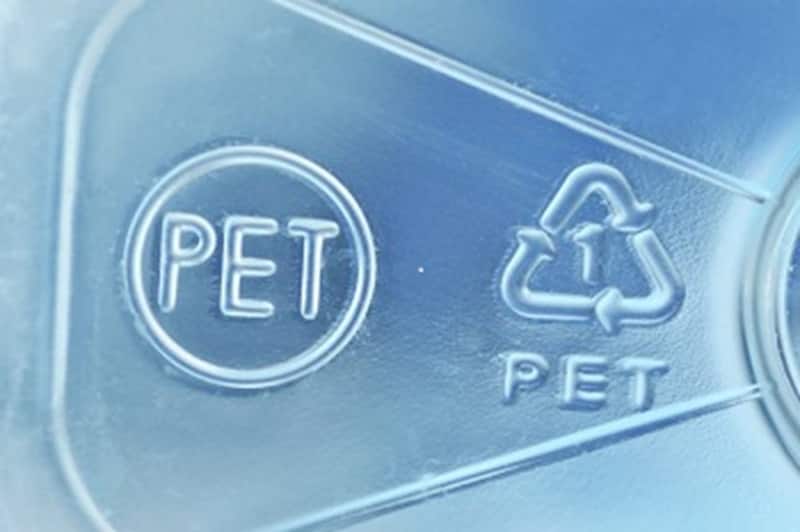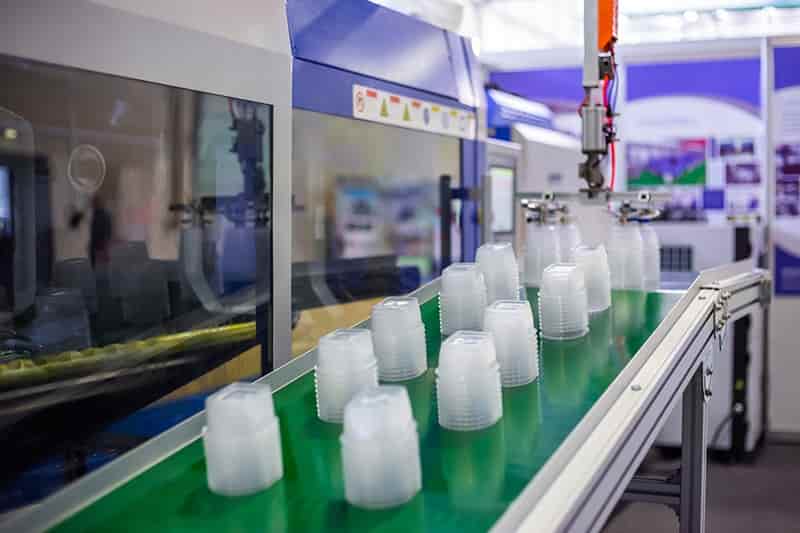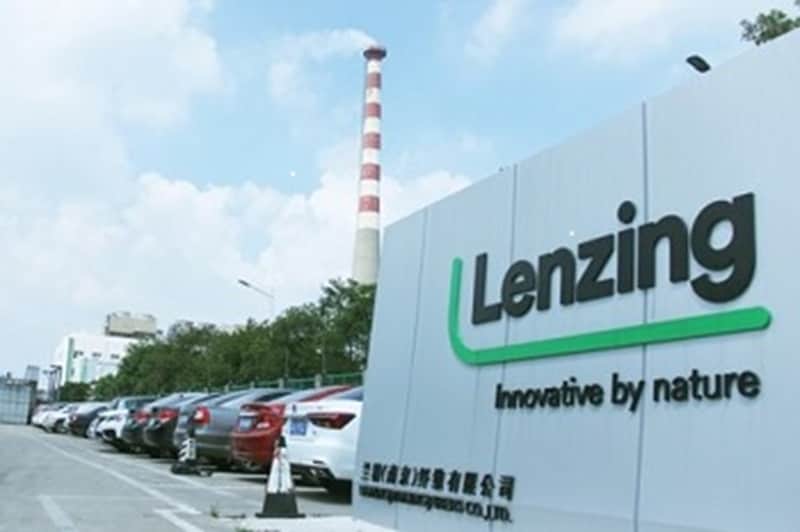Automated processes are already highly developed all along the global textile and garment manufacturing chain. Circular Textiles
The supply chain is, however, still strictly linear, while being highly complex – spanning from fibres to finished garments and still involving tremendous waste and many unnecessary transportation steps globally on the route from the first chemical processing plants or cotton fields to the shelves of High Street stores.
In addition to continuing to address these issues, the supply chain will now very quickly have to become more circular, as legislation closes in and changes things dramatically.
New Restrictions
There is an immediate need for advanced new technologies that can close the loop for the collection, sorting and pre-processing of waste garments, in order for recycling to be further developed, especially in the European Union (EU), which will be first in imposing new restrictions. Circular Textiles
As previously reported by Fibre2Fashion, over seven million tons of waste textiles is being mandated to be separately collected each year within the EU from 2025. It will be paid for by the brands who put product into the market via the new Extended Producer Responsibility (EPR) scheme, and this waste is no longer eligible to be landfilled, incinerated or moved on to other countries. As such, it will create a 32 million-ton mountain of new waste by 2030 without immediate action.
Worn Again Technologies
The huge challenge this poses was emphasised by a number of speakers at the 62nd Dornbirn Global Manmade Fibers (GFC) conference held in Austria from September 13-15, including Toby Moss, director of business development for Worn Again Technologies. Circular Textiles
Worn Again Technologies has raised funding of some €42.9 million to support the construction of its new textile chemical recycling demonstration plant in Winterthur, Switzerland, and counts Sulzer, Oerlikon and fashion retailer H&M among its key strategic investors.
The demonstration plant will be opened in 2025 and will recycle fibres from hard-to-recycle fabric blends using a solvent-based process, with an annual capacity of 1,000 tons. (Just for context, annual global fibre consumption is currently 120 million tons.)
Licensing model
Worn Again, however, is a technology licensing company and does not plan to build its own facilities, but is working with technology partners who will quickly build much larger-scale commercial plants. Circular Textiles
The first of these is expected to come onstream in Europe and have annual capacities of approximately 50,000 tons per annum by as early as 2027-28, when feedstock streams from waste textiles have sufficiently built up.
“At the moment, most current recyclers are focused on post-industrial waste, but demand will soon outstrip supply, which will lead to a rush into post-consumer textile waste,” Moss said. “At the same time, recycling capacity is not yet growing as fast as demand, while bottle companies are getting a lot better at bottle collection so a lot of rPET from bottles currently used in textile production will not be available. As a result, recycled content in textiles is likely to go down rather than up for a period and this indicates some healthy price premiums for the first companies producing recycled PET polyester fibres with the same performance as virgin fibres.” Circular Textiles
As with many other current recycling technologies being developed and planning industrial upscaling in the near future, success is in part hinged on the collection and sorting of waste clothing becoming much more sophisticated – and quickly.
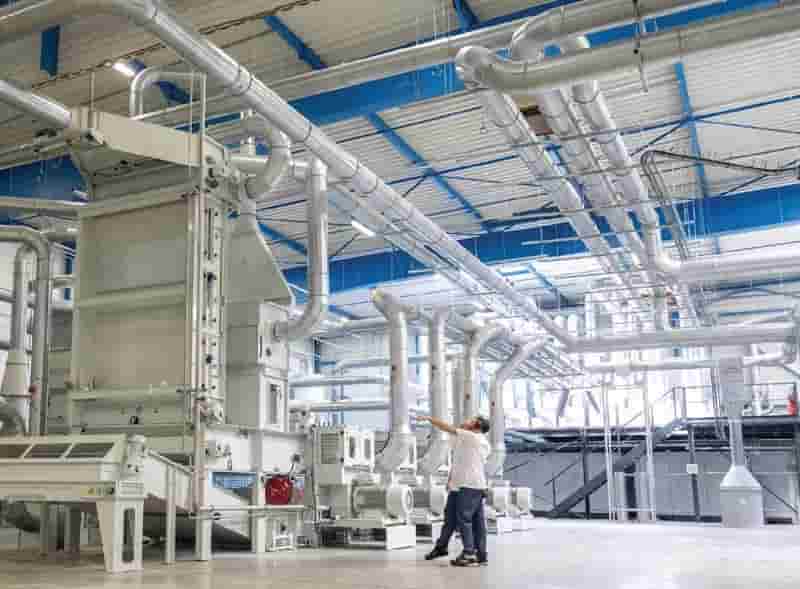
UK-based Colorifix aims to bring environmentally friendly fabric-dyeing solution to China and Southeast Asia in 2025
- Biotech start-up will focus on markets in India and Sri Lanka next year, before making its move to China and Southeast Asia
- Production life-cycle using its solution can help reduce carbon emission by 31 per cent, water consumption by 77 per cent and chemical usage by 80 per cent
Colorifix, a finalist for Prince William’s Earthshot prize, aims to bring its environmentally friendly fabric-dyeing solution to markets in China and Southeast Asia in 2025 to help tackle pollution in the garment manufacturing industry. Circular Textiles
The biotech start-up uses DNA sequences from nature and microorganisms to create pigments that can be fixed onto fabrics in a way that significantly reduces water and chemical usage, as well as the carbon footprint in the dyeing process.
The UK firm will make its foray into the Asian markets from the first half of next year, starting with India, the world’s fifth-largest producer of textiles, and Sri Lanka, according to its chief operating officer Christopher Hunter. The firm is still in “very early stages” of establishing its presence in China, he added.
“China is a very important market for textiles,” Hunter said in a video interview on Tuesday. Circular Textiles
“We are aware that there are increasing environmental targets for the industry in China, which might in some way accelerate our entry. It won’t be before 2025.”
China announced in April last year that it aimed to recycle 25 per cent of its textile waste and churn out 2 million tonnes of recycled fibre by 2025, part of its big push to achieve peak carbon emissions by 2030 and carbon neutrality by 2060. That included promoting green and low-carbon production in the textile industry.
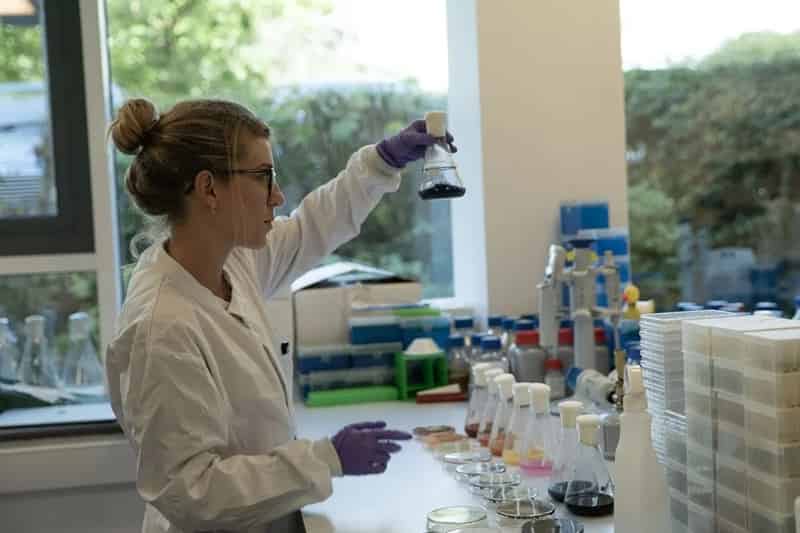
The battery is the key factor for electric cars’ convenience and affordability. The battery is also the main source of anxiety and doubt for many drivers
It is obvious that the high price of electric cars is related to the battery.
Let’s see why. Electric cars: the battery determines the economic difference Electric cars are gradually winning over drivers, especially in Italy, that the energy transition is possible on a large scale. Circular Textiles
However, the electric transition imposed by the European Union in a short time is not very encouraging for the switch from thermal engines to electric ones.
What makes electric cars less attractive is the high cost of eco-friendly vehicles, which are on average between 10,000 and 15,000 euros more expensive than a combustion car in the same segment and, as expected, not everyone can afford them.
How can the costs be lowered and what are they mainly due to? The answer is simple: to the batteries. Circular Textiles
Andy Palmer, former operations director of Nissan and responsible for the first Leaf, confirmed this and also predicted a drop in prices in the next few years.
Cheap electric cars: we need smaller batteries and a change of mentality Andy Palmer, former operations director of Nissan, provided the solution to lower the costs of electric cars.
He said: “The solution for an affordable electric vehicle is not to wait for the technology to mature, it’s not necessarily playing with the chemistry: it’s simply using a smaller battery. But to have a smaller battery you need charging infrastructure, that’s the key.
A decent charging network including home chargers probably has around 15 million charging points and we are a long way from that at the moment.
Unless an effective infrastructure is achieved quickly, people will not naturally transition to electric vehicles. Circular Textiles
People will continue to mention range anxiety and you won’t change that mindset. With a ubiquitous network, people won’t worry so much about battery life, they’ll know they can always plug into a charger and that’s when a smaller battery can be accepted.
That’s when you get the transformation.” However, not only a technical change is needed, but also a mental one by the consumers, as David Greenwood, expert in advanced propulsion systems at the Warwick Manufacturing Group, explained: “The key is not to buy an EV with more battery capacity than you need, if you spend a fortune on a car capable of 500 miles and then only drive 10 miles a day, you’re paying for the battery and all the systems, but not you will save on fuel to cover them. Circular Textiles
A manufacturer could make three different module models and assemble them into eight different models to achieve economies of scale at the module level.
Something that would allow us to obtain economies of scale and introduce much larger cells.
While in the early days batteries like Tesla’s contained thousands of small cells, the future will see batteries containing hundreds of much larger cells.”
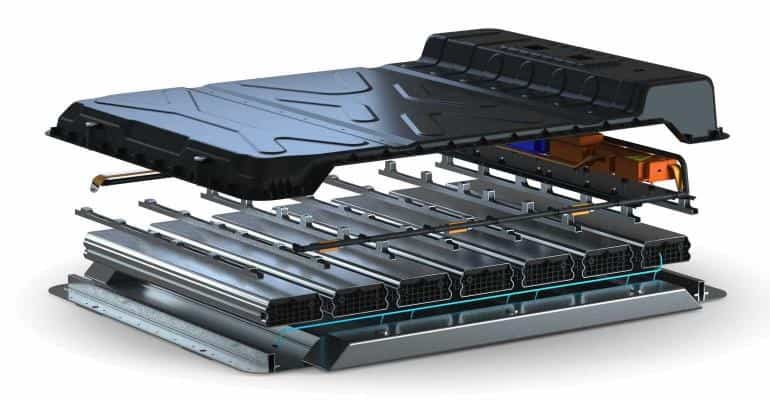
Korean petrochemical firms ramp up carbon fiber production
The South Korean petrochemical industry is ramping up the production of carbon fiber, a part of its focus on high value-added businesses to develop mid- to long-term growth engines amid a prolonged slump in the market. Circular Textiles
According to multiple industry sources on Tuesday, Hyosung Advanced Materials Corp. plans to expand its carbon fiber production capacity, which currently stands at 9,000 tons per year, to 16,500 in 2024, 21,500 tons in 2025, and 24,000 tons by 2028.
The company has also decided to establish a new carbon fiber production entity, Hyosung Vina Core Materials Co., in Ba Ria-Vung Tau Province in southern Vietnam.
Toray Advanced Materials Korea Inc. also recently held a groundbreaking ceremony for the expansion of its carbon fiber unit 3 in Gumi City, North Gyeongsang Province.
The company plans to expand its annual carbon fiber production capacity to 8,000 tons by 2025 from 4,700 tons. Circular Textiles
Carbon fiber is called “super fiber” as it weighs one-fourth of iron but is over 10 times stronger.
Demand is growing in many areas, including compressed natural gas (CNG), compressed hydrogen storage, automotive parts, and wind blades.
The market for carbon fiber, also dubbed the “rice of the future,” is expected to grow at nearly 10 percent on average annually.
Global demand for polyacrylonitrile (PAN) carbon fiber is expected to increase to 327,000 tons in 2035 from 112,000 tons in 2023, according to Japanese market research firm Fuji Keizai Co. Circular Textiles
The recent decisions by petrochemical companies to enter the carbon fiber business come as they seek growth engines with high value-added products amid a sluggish market. Hyosung Advanced Materials, whose flagship product is tire reinforcement materials, posted sales of 783.3 billion won ($597.03 million) in the third quarter, down 20 percent from a year ago, and an operating profit of 35.7 billion won, down 46 percent.
Meanwhile, the carbon and aramid fiber segments saw solid demand and posted an 11 percent increase in sales that hit 90.7 billion won during the period.
Increased solar power generation is also driving demand for carbon fiber. Recently, carbon fiber has been in demand for insulation materials used to produce polysilicon and ingots, which are key value chains in the solar industry.
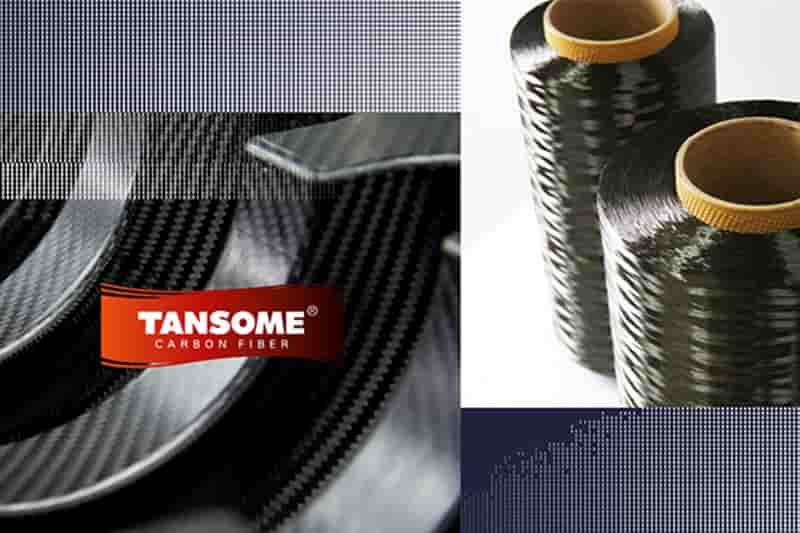
Coca Cola, Nestlé face scrutiny on recycled bottles claims
They also denounced the use of images suggesting that plastic bottles have no impact on the environment. The groups argue such claims are “factually incorrect” and do not comply with EU rules as they mislead consumers.
The recycling rate for PET plastic bottles is estimated to be 55% across the EU and the likelihood of it becoming a bottle again is around 30%, the groups say.
The claims also do not consider that virgin materials can be added during manufacturing and parts of a plastic water bottle, such as lids and labels, cannot be made from recycled plastic. Circular Textiles
Drinks bottles are one of the top sources of plastic pollution on European beaches, the organisations noted and in October Dutch government inspectors said that the private sector is not doing enough to make sure more plastic bottles are collected.
“Using 100% recycled or recyclable claims or displaying nature images and green visuals that insinuate that plastic is environmentally friendly is misleading consumers.
Such claims however can be found on many bottles sold across Europe.
The problem is that there’s no guarantee it will be fully recycled once it’s in the bin,” said Beuc deputy director Ursula Pachl. Circular Textiles
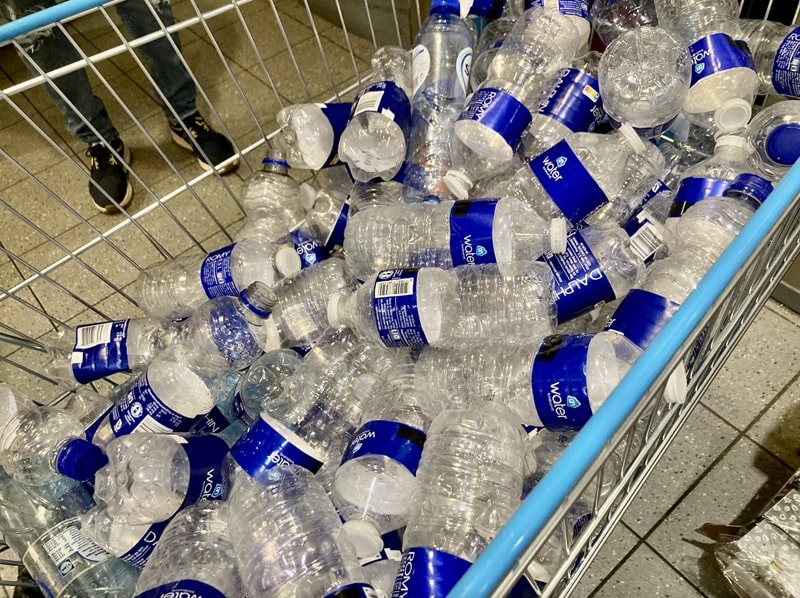
One million tonnes of plastic additives pollute the world’s oceans each year
A new study has revealed that approximately one million tonnes of plastic additives leak into the planet’s oceans every year.
The report – conducted by EA Earth Action – reveals the scale of pollution caused by these chemicals on an annual basis, with the organisation warning that, without substantial changes to production and waste management, the leakage of plastic additives into oceans and waterways could increase by over 50 per cent by 2040.
The study – entitled ‘Adding It Up’ – further highlights that a significant portion of this pollution – approximately 116 kilotonnes – originates from plastic packaging materials alone. Circular Textiles
EA Earth Action stresses the potential dangers this could pose to human health – the vast majority of additives found are untested, unregulated and have been linked to various health conditions such as obesity, cancer and fertility issues.
Everyday items such as textiles or vehicle tires provided a considerable contribution to the leakage into oceans at 37 and 35 kilotonnes respectively.
Publishing the findings ahead of the third session of the UN Global Plastic Treaty Negotiations (INC-3) – aimed at formulating a legally binding international treaty to tackle plastic pollution – EA Earth Action is calling for increased transparency on the composition of plastic products alongside the scaling of effective waste management practices across the globe. Circular Textiles
Julien Boucher, Founder of EA Earth Action commented: “The findings of our report underscore the urgency of adopting a comprehensive approach to confront the challenge of plastic pollution and combat additive leakage effectively.
“The widespread inclusion of potentially harmful additives in plastics, combined with substantial amounts of mismanaged plastic waste worldwide, has created the toxic threat we face today.
“Addressing the problem with additives must be a key talking point at INC-3 if we are to protect the ecosystem and human health from its detrimental effects. Further research into these chemical compounds is critical to addressing the threats from the whole spectrum of plastic pollution.” Circular Textiles
Calls to reduce plastic additives in oceans
EA Earth Action is calling on policymakers to select materials that are both more reusable and recyclable to help tackle the plastics crisis and drive towards a more circular economy.
The organisation has also called for further research on how and why plastic additives leak into the environment and the effects this has on the human body to enable governments worldwide to construct more effective prevention strategies.
Maria Westerbos, Founder of the Plastic Soup Foundation and Co-founder of the Plastic Healthy Council said: “The results of EA Earth Action’s Adding it up report are a sobering reminder of how additives toxify both our planet and our bodies. We should never forget that all these chemicals are added to plastics and, in that way, are released into the entire ecosystem, including our own bodies. We now must see action.”
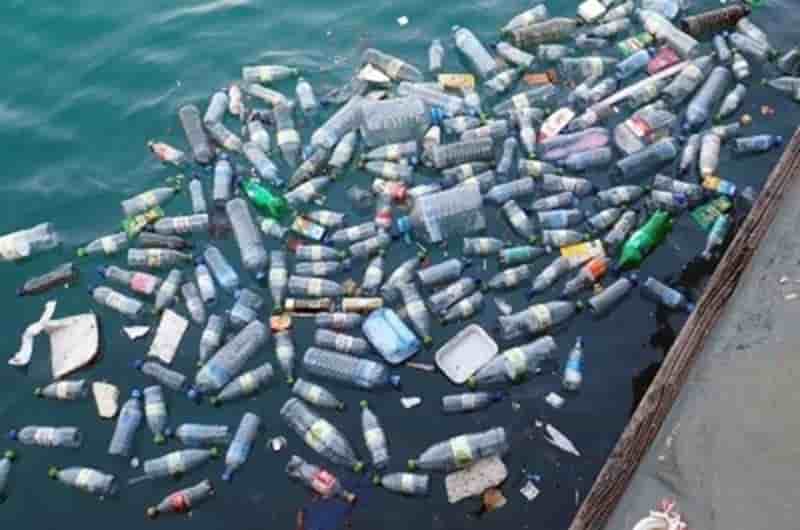
APR and RecyClass Work to Align Design for Recycling Guidance
Continued efforts to drive harmonization of plastic packaging recyclability
The Association of Plastic Recyclers (APR) recently announced updates to the APR Design® Guide for Plastic Recyclability to align with RecyClass, the European based non-profit initiative focused on advancing plastics circularity. The APR Design® Guide will now state that 6% of EVOH is allowed for HDPE containers. Circular Textiles
“Because the recycling process is very similar in both geographies, packaging will likely be processed similarly,” said Curt Cozart, APR COO. “Although some differences exist, APR Design® Guidance is nearly the same as RecyClass. The APR® Design Guide previously allowed for 5% EVOH in HDPE containers but will update to 6% to align with RecyClass Design for Recycling Guidelines.”
Through their respective Technical Committees, APR and RecyClass are accelerating global alignment of recyclability principles. In these groups, scientific data, gathered based on standardized testing protocols, is shared and serves as the base for discussions on uncovering the complexities of plastic packaging. Circular Textiles
In addition to guidance on the use of EVOH in HDPE containers, guidance on the use of EVOH in PP containers has also been streamlined through this collaboration.
“To achieve a truly circular future for plastics, harmonization is essential,” commented Paolo Glerean, Chairman of RecyClass. “The real value of the collaboration between APR and RecyClass is evident in these latest recommendations, providing clearer guidance to the plastics industry globally. These joint efforts will allow the plastic packaging value chain to standardize their products on a larger scale and make the path towards the circular use of plastics more cost efficient.”
This activity is part of a continued effort between APR and RecyClass to reinforce their collaboration to drive worldwide harmonization of recyclability for all plastic packaging types, through a shared vision of science-based design for recycling guidelines and protocols for recyclability assessments. Circular Textiles
This partnership will drive a unified, fact-based approach to recyclability, and bring clarity to the whole value chain.
The harmonization efforts are underway, taking into consideration the variations in recycling capabilities and infrastructure between the two regions.


